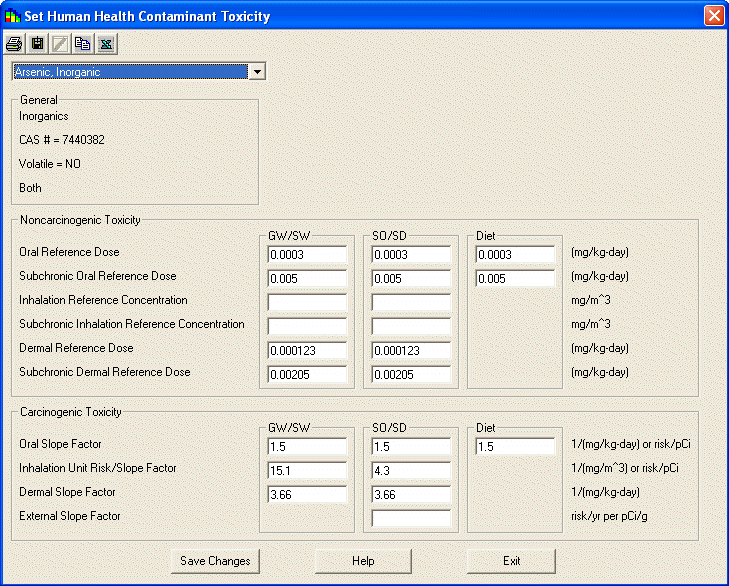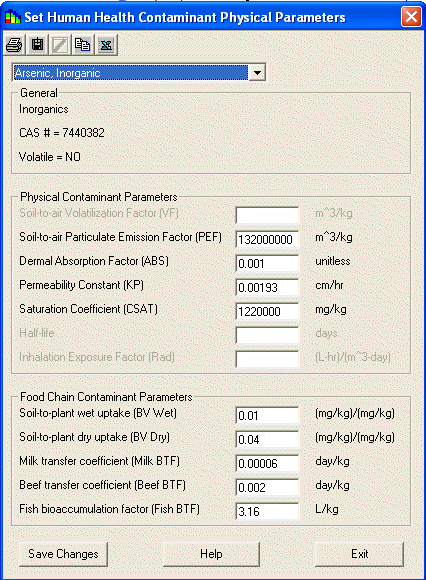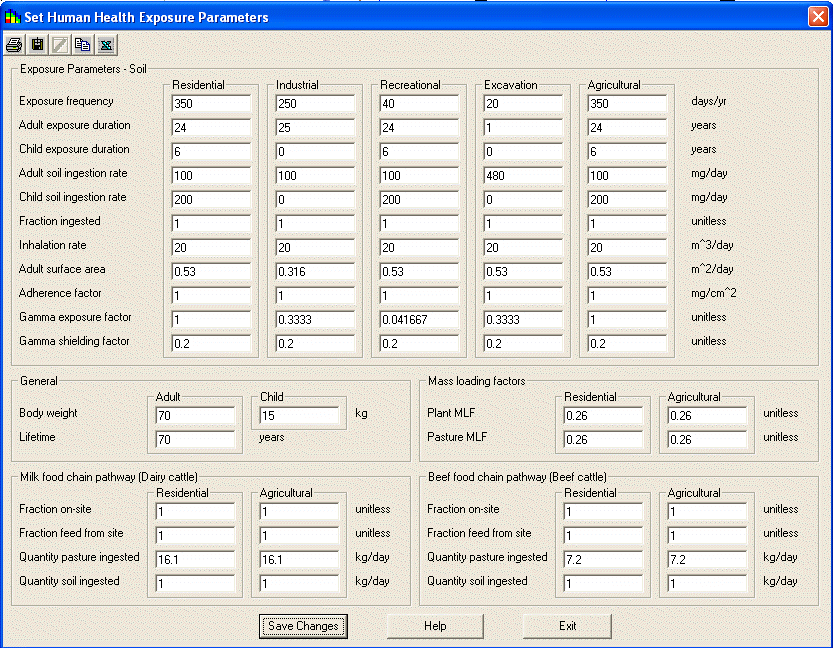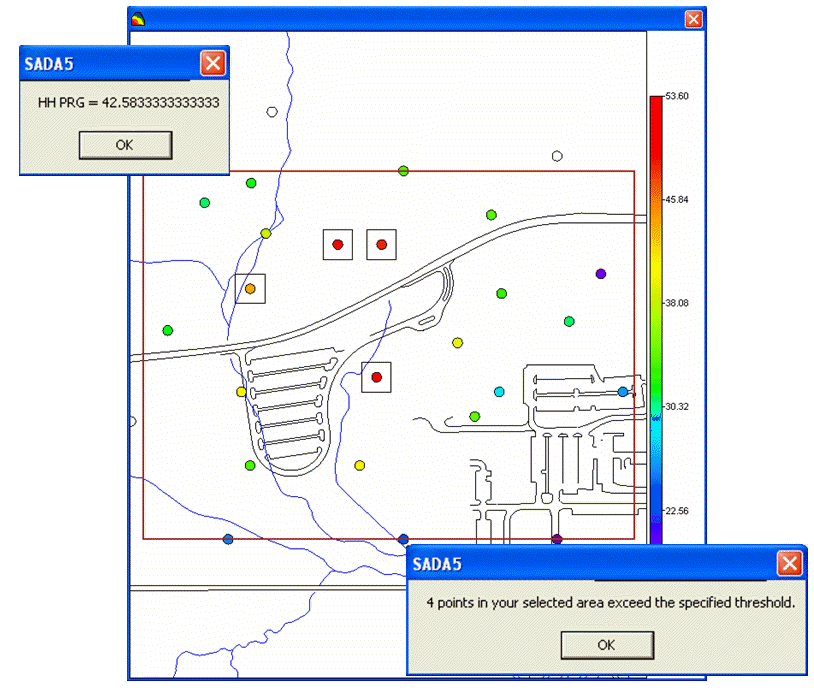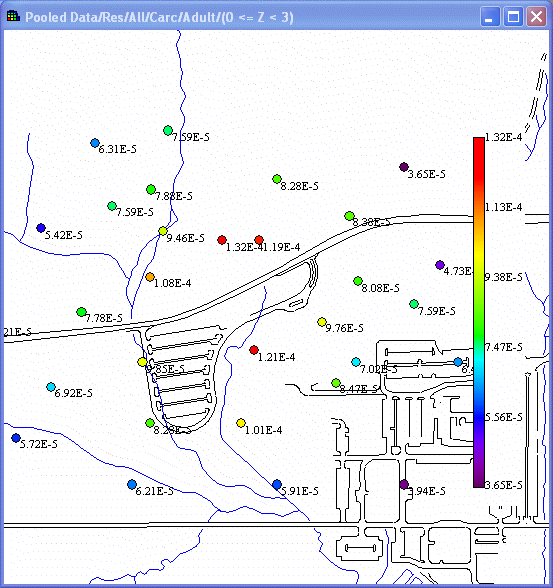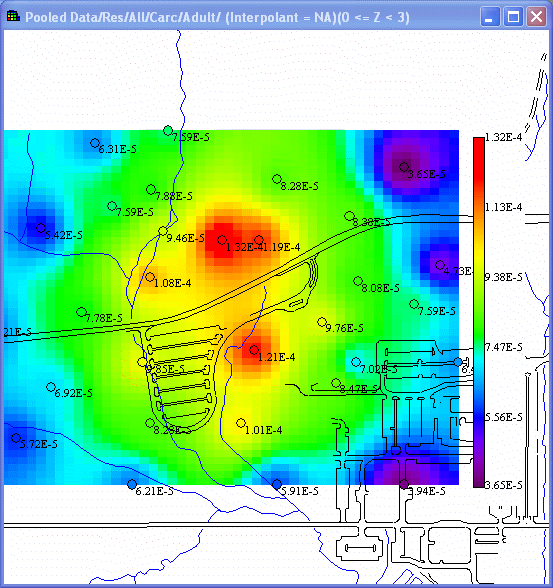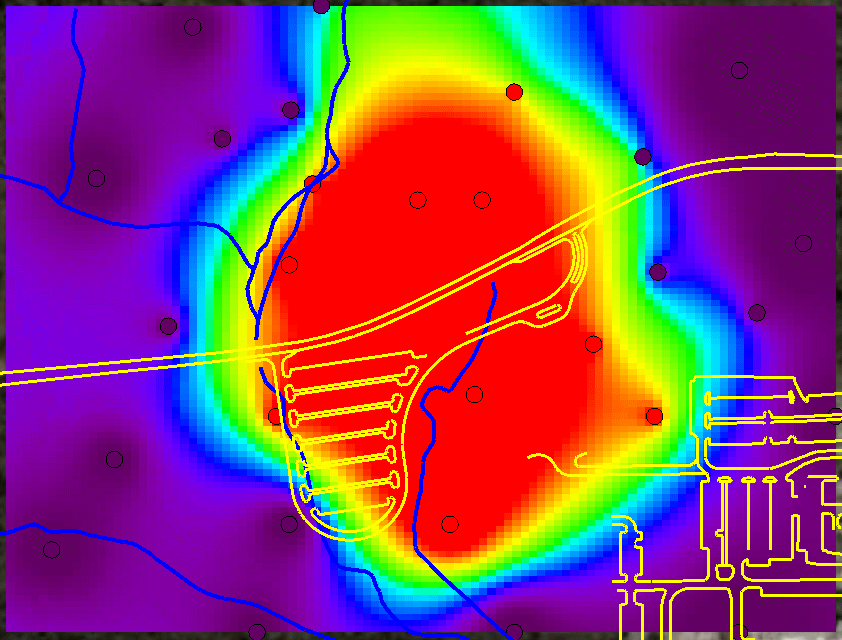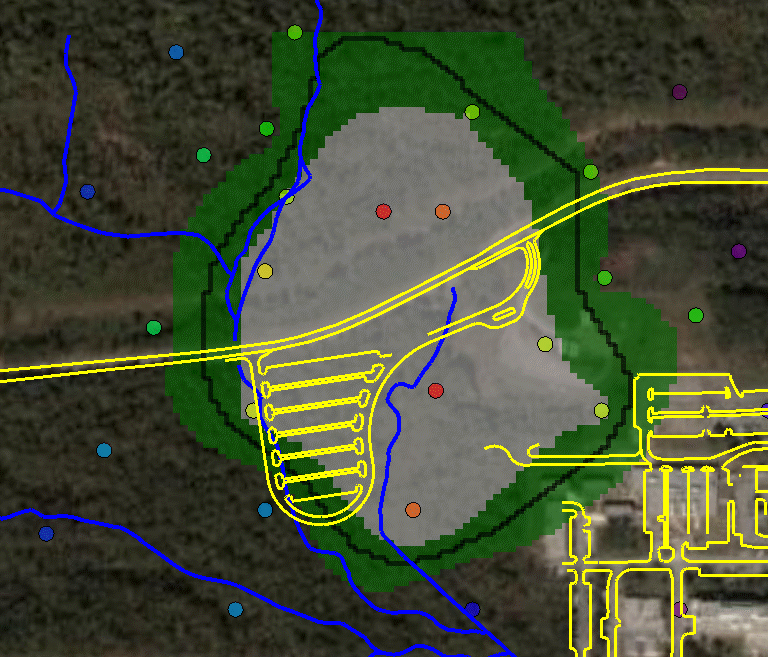

|
SADA Main Page
Free Downloads
Visualization
Sampling
Data Exploration
Risk Assessment
Geospatial Analysis
Geospatial Simulation
Decision Analysis
Cost Benefit Anaylsis
MARSSIM
TRIAD
Other Tools
Technical Support
Documentation
Coming Soon
Training
Education
Applications
Join SADA User Group
RAIS
Bugs
People
Email Us
Current SADA Webpage Vistors Previous SADA Webpage Visitors 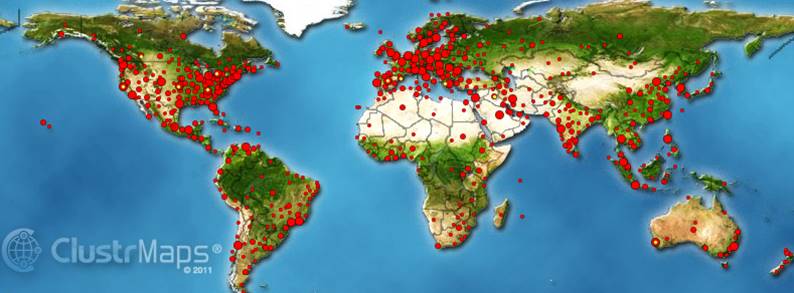 |
Spatial Analysis and Decision Assistance
|
Human Health Risk AssessmentSADA provides a full human health risk assessment module and associated databases. The risk models follow the EPA's Risk Assessment Guidance for Superfund (RAGS) and can be customized to fit site specific exposure conditions. The following landuse scenarios and exposure pathways are available for both radionuclides and nonradionuclides to calculate risk and data screening levels. Landuse Scenarios
Exposure Pathways
SADA comes with two databases to get users started. The toxicological profiles data base contains all tox/physical properties for over 1000 contaminants. These values come from the Risk Assessment Information System where a project funded by the federal government to keep up to date queriable toxicological databases based on IRIS and HEAST among other things including online risk calculation tools. The second database contains exposure or scenario parameters. Each database is produced in Microsoft Access and can be readily modified by the end user. Another way to modify parameters is within a SADA file (does not affect these two databases). During the risk setup, SADA compares your contaminants against the database of known contaminants and with confirmation from you draws from these databases the relevant information and stores it inside the SADA file leaving the external information undisturbed. Within SADA there are a number of ways to control parameter values through easy to use input screens. The following shows some of the more important windows. Toxicological Parameter Control
Physical Parameter Control
Exposure/Scenario Parameter Control
Risk results can be produced in standard tabular format or graphically. Tabular formats are a standard product of risk assessment and includes a table of PRG values (calculated on the fly and based on your model specifications, screening tables comparing representative screening values from your data against PRGs, and foward risk modeling with control over the representative exposure concentration. Total risk is calculated as well. The following shows a typical tabular output. Tabular ResultsPRG Table
Screen Table
Risk Table
There are several ways to export tabular information from SADA. The easiest way is to use the Export To Excel button which appears in most SADA tables. In the images above, pressing this button will open Microsoft Excel and will automatically populate the cells with the information from this table. Users can then format it as needed. Other ways include auto documentation, copy to clipboard, and export to ascii file. Graphical ResultsRisk assessment can now contribute to the characterization in a spatial context. Users can subdivide the site using polygon tools and perform mini-risk assessments in each subregion. Users can also connect the risk model directly to the geospatial tool such as estimation and uncertainty mapping and the subsequent decision analysis maps. The following images show the spatial distribution of risk, the probabilty of exceeding a PRG, and a decision map based on a risk criteria.Spatial Screens (boxes indicate points of exceedance)
Point Risk (can sum over contaminants/point as well)
Risk Mapping (can sum risk maps over contaminants as well)
Probability of Exceeding Risk Criteria
Risk Based Decision Map (gray area is area of concern)
Supporting Sampling Designs To see how risk is used in development of sampling designs see sample designs. |
SADA Main Page Free Downloads Visualization Sampling Data Exploration Risk Assessment Geospatial Analysis Geospatial Simulation Decision Analysis Cost Benefit Anaylsis MARSSIM TRIAD Other Tools Technical Support Documentation Coming Soon Training Education Applications Join SADA User Group RAIS Bugs People Email Us

